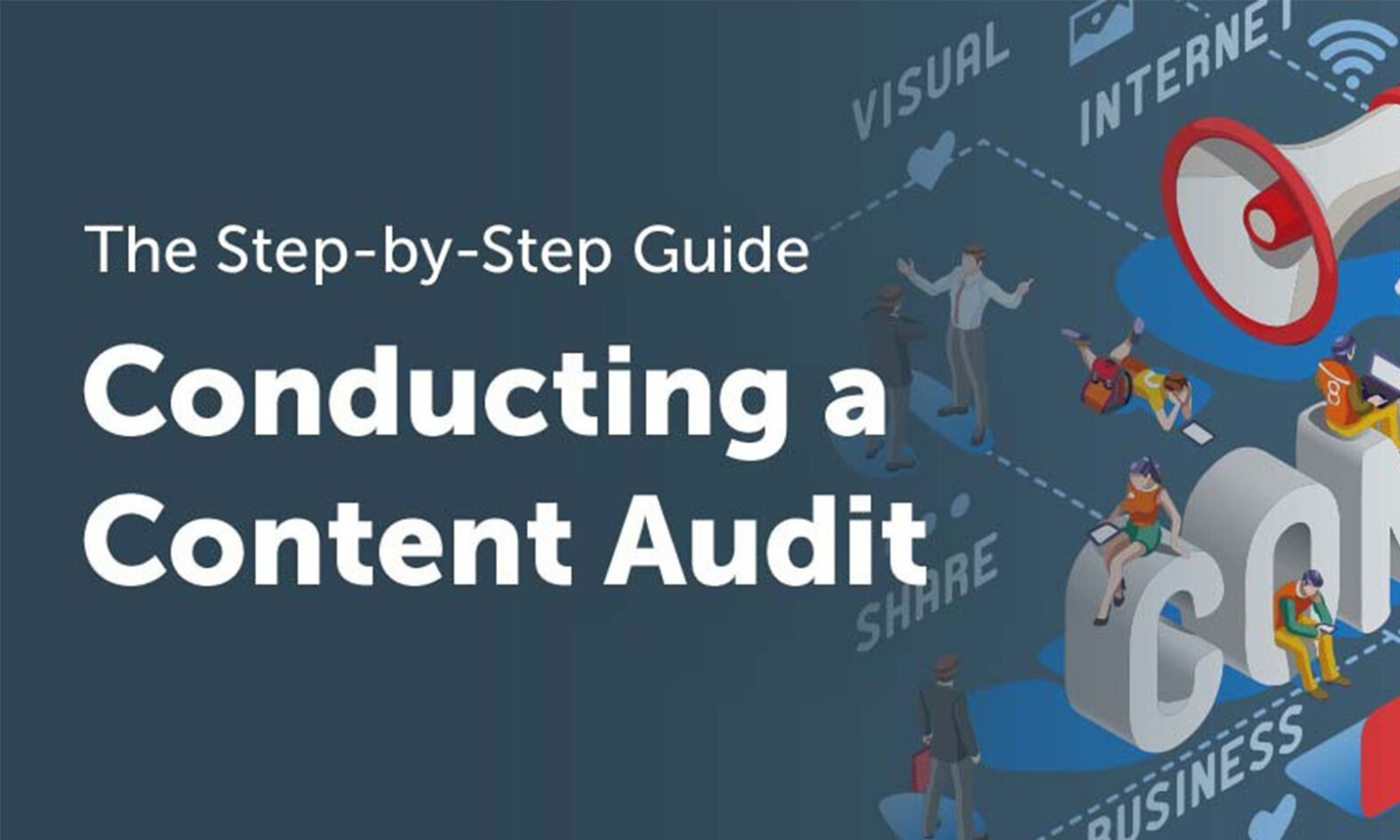(Updated: Match 4, 2022)
When crafting an effective content strategy, there’s no such thing as a “set it and forget it” option. It might seem like it would be easier to create, post, and be done with content, but that approach isn’t going to get you anywhere near your short- or long-term goals.
Instead, a truly successful content marketing plan includes regular “check-ups” to ensure your strategy and body of content are both on track. A content audit (sometimes called a “content inventory” is the key to assessing content performance, measuring progress, and taking smart steps towards a better SEO content strategy.
What is a Content Audit?
A website content audit is a process used to analyze all of your website’s content systematically.
There are a few key objectives to conducting a content audit, including:
- Pinpoint strengths and challenges in your current content strategy
- Find ways to optimize your current content development workflow/approach
- Make targeted adjustments to better align your content plan with your marketing goals
This guide will break down how to conduct a website content audit to support your progress towards 2022 business goals. With this step-by-step explanation of the content audit process, you’ll be ready to examine all of your content with a critical and well-informed eye.

How Does a Content Audit Work?
There are several ways to tackle a content audit, and we’re going to walk you through a detailed explanation in the next section. But in general, as you sort through content, you’re going to keep four primary categories in mind. Much like a closet cleanout, you’re aiming to put every single item into one of a few “piles”:
- Remove
- Keep
- Improve
- Consolidate
As you examine each piece, you can ask yourself direct questions to guide the sorting process:
- Does the content piece serve a clear purpose, both in terms of SEO and content strategy?
- If NO, then it may be time to Remove it.
- If YES, then it could be a good piece to Keep.
- Does the content piece have a solid foundation but could benefit from some improvement? For example, could the piece use some restructuring, edits for voice or style, a good grammar and spelling clean-up, or even some updated keywords?
- If YES, then the piece could be one to Improve.
- Are there multiple content pieces that share similar goals and subjects?
- If YES, you might want to Consolidate the pieces to maximize their SEO impact and streamline your overall body of content.
Keeping these basic guidelines in mind can help you evaluate and sort content with confidence. Remember, even though disposing of content can feel like you’re “wasting” prior efforts, it’s an important step in creating a stronger, more effective content collection overall.
Quality, not quantity, is the target you aim for in the content auditing process.
How to Do a Content Audit: A Step-by-Step Guide
Learning how to audit website content is much simpler if you have a clear plan of action. If you’re organized in your approach, you’ll use your time and energy far more effectively – and the overall experience is likely to go much smoother.
There are five essential steps in a content audit:
- Identify goals and metrics
- Inventory website content
- Gather and analyze relevant data
- Use what you’ve learned to create a plan of action
- Adapt your content marketing strategy as needed
Step 1: Identify goals and metrics
Anytime you’re preparing to tackle a major task, it’s wise to begin by outlining defined objectives – as they say, keep your eye on the prize.
First, ask yourself what your business goals are and what results you hope to achieve with a content audit. What benefits are you looking to gain? Your answers to these questions can help you determine clear goals for a website content audit.
For example, here are some examples of content audit goals and how you would go about achieving each one:
Goal: Improve search engine optimization (SEO)
An SEO content audit can boost your overall SEO results.
- First, you would identify the web pages with the strongest SEO potential for ranking in the top 10 of search results.
- Then, figure out which content pieces you need to improve, consolidate, or remove.
- Check your internal linking, and optimize wherever possible.
Goal: Support increased audience engagement.
When your content effectively engages your target audience, it can create a domino effect of positive results.
- First, find out which types of content are most engaging for your specific audience.
- Identify the topics your target users are most interested in.
- Figure out which content types generate the highest levels of social engagement.
Goal: Boost conversion rate
Your conversion rate is a major marker of a successful strategy, and a content audit can help you see measurable growth.
- Find the web pages that deliver the ideal user experience for your website visitors.
- Then, pinpoint the content that is generating the highest number of leads.
- Match up each stage of the buyer’s journey with the most efficient type of content.
After choosing a goal for your content audit, you can then select the most suitable metrics to measure your progress. Typically, content marketing metrics fall into one of four primary categories:
- SEO: Organic traffic, keyword rankings, backlinks, dwell time, etc.
- User behavior: Bounce rate, average session duration, page views, etc.
- Engagement: Social media platform likes, shares, mentions, comments, etc.
- Sales: Conversion rate, number of leads, ROI, etc.
Each of these categories is made up of metrics helpful in analyzing and reaching specific types of goals. For instance, if your goal is to find the content topics that are most popular with your target users (so you can create more content focusing on these topics), you’ll look at engagement and user behavior metrics.
Step 2: Inventory website content
When you inventory your content, you usually aren’t going to assess every piece that exists on your website – that would be a massive amount of content to wade through. Rather, it’s more productive to choose certain content for review.
You might opt to audit internal website content, like product descriptions, landing pages, and blog posts. Or, you could conduct an inventory of externally-published content. Depending on your end goal, you might be taking a closer look at other content types, such as PDFs, videos, or even interactive pieces.
In this guide, we’re focusing on how to perform an audit for all of your website’s textual content.
First, collect URLs for all of your content pieces. Using the online content tool of your choice (such as SEMrush Content Audit), collect all of the URLs for the web pages you are going to analyze. Several online content tools will dramatically speed up the process by using your sitemap data to generate a URL list that includes related metrics.
If you don’t have a sitemap, creating one is a top priority. Not only is it helpful for content auditing, but it’s also essential for your search visibility. You can find sitemap generators online, as well as different free WordPress plugins for sitemaps. After you’ve generated your sitemap, don’t forget to submit it to Google Search Console as well.
After you have a list of URLs, catalog the content. Once you have all of your URLs, you’ll be sorting them according to different criteria. You can use either a spreadsheet, a content audit template, or an online tool to complete this step, and you’re free to choose which category/categories you want to sort into:
- Content types (product description, landing page, blog post)
- Stage of buyer’s journey (awareness, consideration, decision)
- Format (text only, with or without a call-to-action, videos/images included)
- Number of words
- Date published
- Author/creator
We also recommend collecting metadata for your content pieces to confirm the accuracy and make any updates with ease.
Set up columns to collect and organize the data for each URL (content pieces). There’s not necessarily just one “right” way to do this; simply choose an organizational method that makes the most sense for you. You will be adding more columns as we move forward, so take that into account.

Step 3: Collect and analyze content data
Data collection is the part of content auditing that takes the most time, largely because it requires you to hunt down data from several different sources. Some content audit tools will automate data collection, using your metrics and goals as a guide, so that’s one way to save time if needed.
Depending on what you’re hoping to achieve with the audit, some tools you can use include:
- SEMrush Content Audit: This tool displays multiple data points, including social shares, metadata, backlinks, authors, and content length for each included URL.
- Google Analytics and Google Search Console: Once you connect the two accounts, you can explore a broad range of data, such as average session duration, number of sessions, bounce rate, search queries, page views, and more.
- SEMrush Position Tracking: Track rankings according to target keywords, so you can locate the content with the best SEO position and update those pieces to boost your overall rank position.
- ContentWRX Audit: This tool lets you amass a collection of information that includes file types and metadata, as well as page-level details such as documents, videos, images, and screenshots of each web page. Sorting and offline exporting are also handy features.
- SEMrush Site Audit: If better rankings are one of your primary goals, this tool is a must. It combs your web pages to find technical issues, so you can easily correct any problems.
As you collect all relevant metrics, you’re going to add them to your spreadsheet. The best way to do this is to simply place each metric into a column, entering the data for each URL in the appropriate cell.
Now that you have a wide range of content metrics, it’s time to examine the data to better understand your content and its strengths/weaknesses. For example, a certain web page might have a fantastic traffic rate but a low session duration and high bounce rate. This information can tell you that users are interested in the content topic but that your content didn’t meet their expectations. The issue could lie in something as seemingly simple as page load time or be related to the relevancy of the content to the actual title.
Finally, use your goals and data analysis to assess each content piece. Remember those “piles” we talked about earlier? This is the step where those come into play.
- You can keep content that is relevant and performing well, including evergreen content such as FAQs, general business information, and testimonials.
- You can improve/update content that isn’t performing up to par or content that has become outdated. Pieces in this pile might include low-conversion or low-traffic content or informative articles with outdated statistics or information.
- You can consolidate content that shares a similar topic and goal, especially if it appears that combining pieces will result in greater SEO potential.
- Finally, you can remove any pieces that can’t be improved or aren’t worth the effort required. Some examples of content to remove in an audit include seasonal campaigns, duplicate content, or content about discontinued or out-of-stock products.
Add a new column to the spreadsheet you use for your content audit, labeling it “Status.” In this column, you’ll label each content item as “remove,” “improve/update,” “consolidate,” or “keep.”
Step 4: Create a plan of action
You’ve collected your data, analyzed it, and used that information to assess each piece of content. The next step is to develop an action plan for moving forward, using a balance of your audit goals and what you’ve learned from your audit analysis.
First, you’re going to prioritize your actions based on your goals. Refer to each of the goals you set in Step 1 of the process. Then, look at the possible results (payoff) you’ll get in exchange for the effort required for each action (investment) and how that aligns with your goals.
For example, if your goal is to improve SEO results:
- Actions such as incorporating links into a blog post require very little effort/investment but can offer good results.
- Actions such as writing an e-book require a significant amount of effort but may only provide moderate or even minimal results.
Weigh the investment and payoff of each action. Then, add a column labeled “Priority” to label each of the action items as “High,” “Medium,” or “Low.”
Now, you can create a plan of action for each content URL. There are many different factors that will influence the exact action steps you’ll be taking for each piece, but some go-to options include:
- Consolidating content
- Reusing content by publishing it in a different format (converting text to an infographic, for example)
- Rewriting content to improve quality, relevancy, and other characteristics
- Expanding content to add more detail
- Refreshing and updating content (including updating statistics, trends, and other information)
- Organizing the structure of your content, using H2 and H3 tags as appropriate
- Replacing ineffective or outdated CTAs
- Adding videos and/or images
- Optimizing metadata (such as titles, H1 tag, and meta descriptions)
- Improving internal linking (link to related blog posts or other resources on your website)
- Employing 301 redirects for web pages you have removed from your website
Always make sure to update Google after making content changes using the Google Search Console. You can submit the URLs of any recently-updated web pages to the URL Inspection tool, so the search engine can reindex and re-rank them.
Step 5: Recalibrate your content marketing strategy
Now, you’re in the home stretch of the content audit process. Even though it’s easy to get caught up in the minutia of updating and improving content, don’t forget to keep your long-term strategy in mind.
You can adjust your content strategy to achieve optimal results by tracking what works and what doesn’t. Otherwise, the pace at which you progress towards your marketing goals will be considerably slower. Build upon the currently working tactics, and be honest with yourself about where your strategy is falling short. Refer to your competitors’ websites so that you can learn from their successes and failures as well.
Make it a priority to review your content marketing plan at least annually or more frequently if you’re in a constantly-shifting industry. And, of course, as your business, goals, and target audience changes, reassessing your content strategy is key.

Make 2022 the Year You Clean Up Your Content Strategy
A large-scale content audit is no small task, and you should expect to invest a significant amount of time, effort, and overall manpower to do it properly. Unless you have ample free time and extra resources, taking a DIY approach to content auditing might not be the best route.
Instead, turn the task over to the professionals at V Digital Services. Our experienced team can conduct a content audit tailored to the most specific needs, streamlining the process and accelerating your results. We’ll break your content into manageable pieces, so you can see where, how, and when improvements can be made. From there, we’ll deploy customized strategies and assess efficacy every step of the way.
An excellent content strategy is just one piece of the puzzle of successful digital marketing. Let V Digital Services help you discover the solutions that bring your business to new heights when you contact our team today!
Image Source: aurielaki , bangoland , Fonstra , VectorMine , moomsabuy / Shutterstock


 PREVIOUS
PREVIOUS